The Two-Rod Bonefish Solution
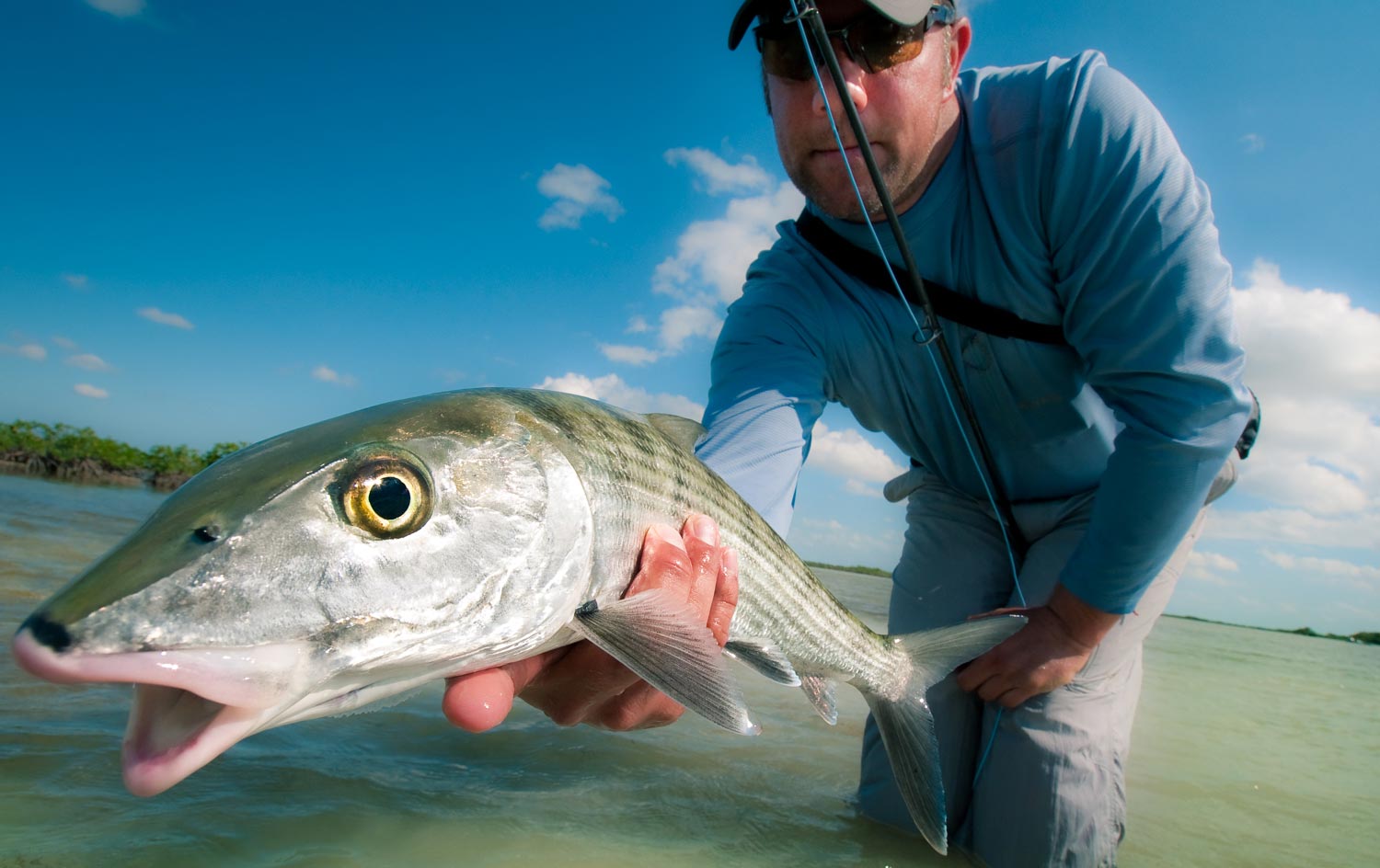
By Louis Cahill
Saltwater fly-fishing is condition dependent, and conditions often change without warning. That’s why I carry two fly rods.
Your strategy for presenting a fly to bonefish can change radically depending on conditions. Bonefishing is always challenging, but not always for the same reasons. That’s what keeps it fun. Having the right setup for the conditions really helps you overcome the challenges, so let’s look at those challenges and how to be prepared for whatever mother nature throws at you.
The most decisive factor in any flats fishing is wind. Most anglers dread fishing on a windy day, but they miss that wind when it’s gone. Making a good cast and turning your leader over in wind can be a real challenge, but the wind gives you an advantage, too. Wind disturbs the surface of the water, making it less likely that your presentation will spook the fish. This allows you to drive a powerful cast into the wind, if you have a fly rod and line that are up to the task.
On days when there is no wind, bonefish can be unbelievably spooky, leaving anglers frustrated as fish run for cover at their false casting. On days like that, your ultra-fast fly rod and front loaded line are a liability, not an asset. So what is the bonefish angler to do? Well, my answer is carry two rods.
My common quiver consists of two 8-weights. One for windy conditions and one for calm. Each of these rods is paired with a fly line which will perform in these given conditions. That way, no mater what happens, I’m ready. These two rods look very similar under casual observation but they perform very differently.
Windy day setups
Your windy day rod needs to be firm and fast. It’s totally ok for this rod to be a little heavier. We aren’t looking for the kind of recovery rate that comes
Read More »Casting Distance Does Play A Factor In Success

Saltwater fly fishing often calls for long accurate casts for the chance of success, and quite often it holds just as true on your favorite trout streams. Of the countless hours I’ve spent guiding my trout clients the past ten years, I’ve witnessed over and over again, how important just a couple more feet of distance can be in getting a trout to eat. You just can’t always approach a hole and make a routine short cast. Often no matter how stealthy you are, you’ll spook the fish if you try getting closer. Occasionally, obstacles such as low hanging trees can make it impossible to get the proper casting angle unless your standing farther away. Other times you may run into a situation where different current speeds between you and your target require a longer cast to get an adequate drag free drift. That’s why it’s so important for fly anglers to get comfortable making above average casts. I’m not saying you have to be able to bomb out eighty feet of line, or that you’ll have to make super long casts all the time either. I’m just saying, there are times when you won’t be fishing that angler friendly pocket water that just calls for short roll casts and quick high-stick drifts. You need to be prepared to make longer casts when the need arises. Believe it or not, quite often trout will follow your flies down stream a good ways before deciding to eat. If your fly gets too close to you the trout will often see you and won’t eat. Making a longer presentation will provide that buffer zone for the trout to inspect and eat without seeing you. Remember that trout don’t have eyes in the back of their head as well. If you don’t get … Continue reading
Read More »Fly Fishing Runoff Can Mean Fish On
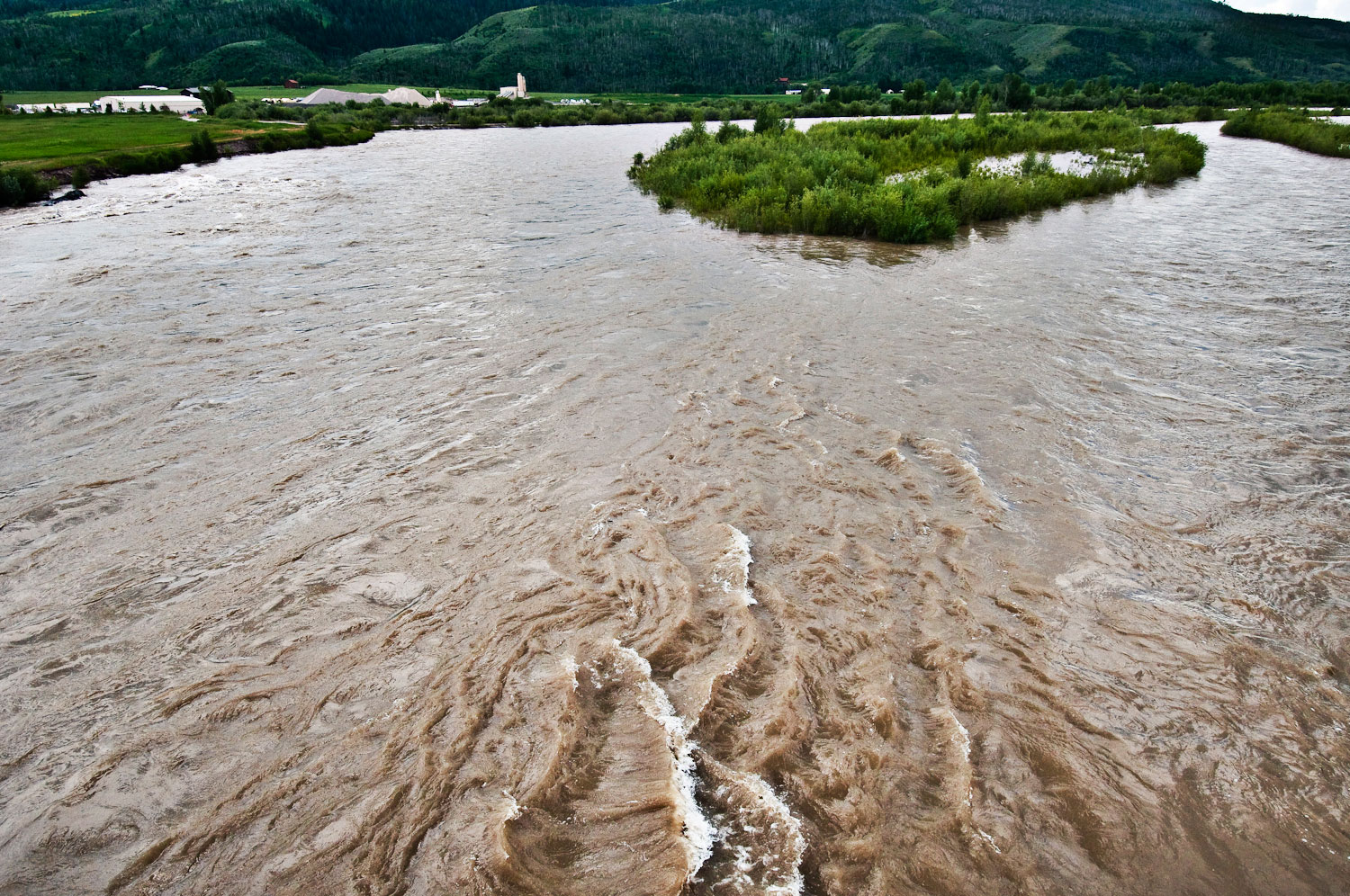
by Johnny Spillane
HAVE YOU EVER SHOWED UP AT A RIVER AND FOUND THAT INSTEAD OF THE CRYSTAL CLEAR WATER YOU WERE EXPECTING, YOU’RE STARING AT CHOCOLATE MILK?
Here in the Rocky Mountain this is a relatively common experience. It can happen for a number of reasons, huge rainstorms, someone doing river work above you or just your normal spring runoff. Don’t fret; while it might not be ideal, here are a few tips that can help you find some fish.
If the water is only slightly off color, you can basically use the same flies that you would if it was clear, just make everything a size or two larger. Instead of a size 18, put on a 16 or a 14. If that is not working, try adding a little bit more flash to your rig. We typically use flies with very little flash, but if the water is off color it can make a big difference in the amount of fish you stick just by changing to something that will reflect a little more light. If you were using a pheasant tail, try tying on a flash back pheasant tail and sometimes that is the only thing you will need to change.
If the water looks like chocolate milk, go big and go flashy. Those size 22 zebra midges that you planned on tying to 6x, that aint gonna work. I like to tie on a large white zonker and dead drift it with some sort of big buggy stonefly like a Pats Rubber leg. In off color water, fish will lose some of their inhibitions and hit anything that they can see. You just have to make sure that they see it. This is also a great time to experiment with different streamers that make noise, anything that will help draw a fish towards you fly.
Fishing runoff can also be one of the best times to hit a river. If it is fully blown, it might be better to explore other options but if a river is on the downside of its peak flows and it is starting to clear up, fishing can be phenomenal. Fish that are spread out all over the river during normal flows will congregate in areas of softer water during runoff and usually if you find one fish, you find 20. When the river is really high
Read More »12 Tips For Epic Fly Fishing Trips On The Cheap
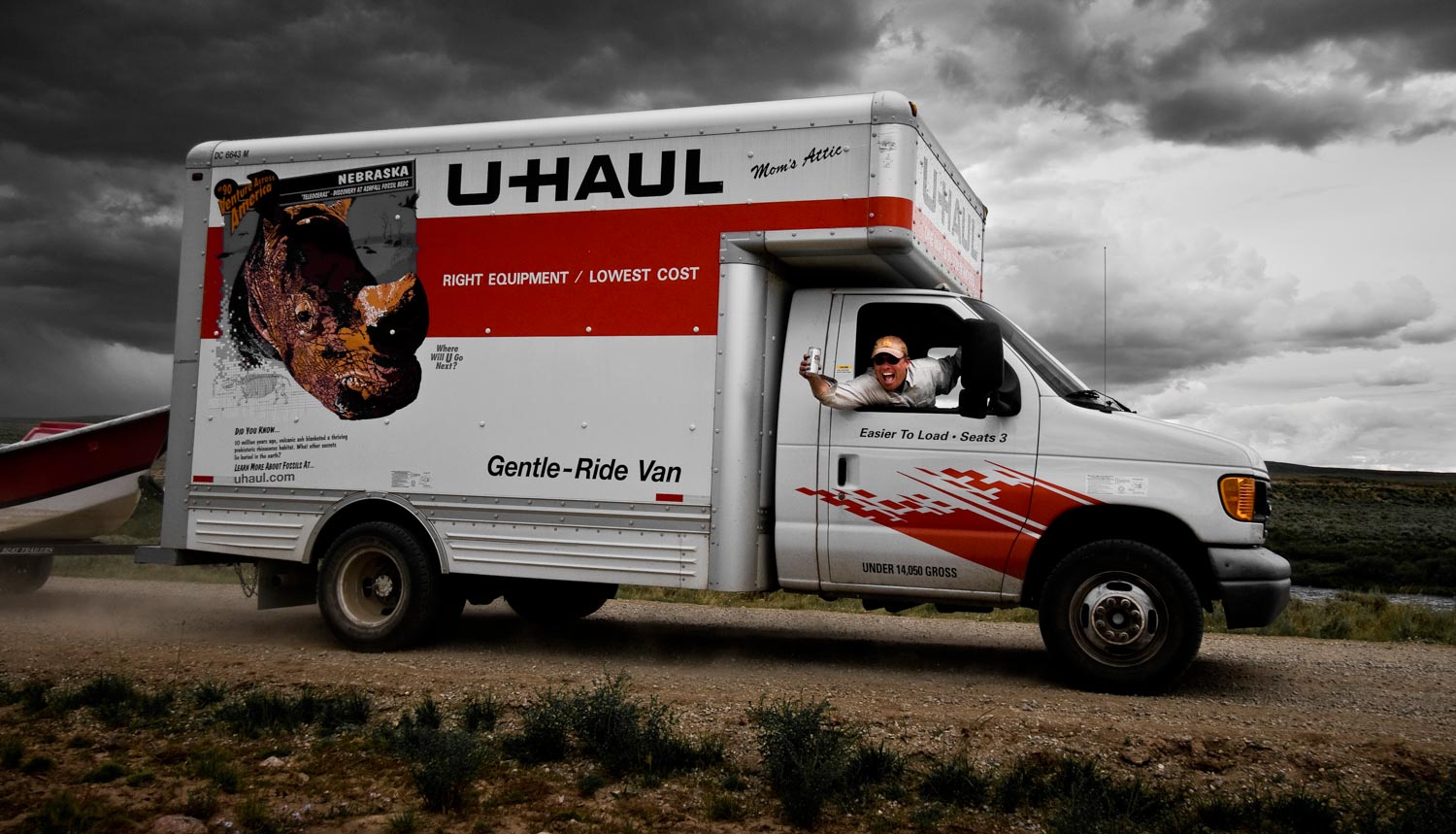
You may be poor, but you don’t have to fish like it.
Some of the greatest fly fishing adventures I’ve taken have cost me the least. I love fishing in exotic locations and spending time at great fishing lodges. Who wouldn’t? But that’s a fairly recent thing for me and primarily funded by my Nikon. Working for my fishing days has paid off for me, but that’s not an option for everyone.
I have never let a lack of funds get between me and great fly fishing. I’ve always figured out a way to get on the water and create some kind of epic adventure. Over the years I’ve figured out one or two tricks that make for great fly bum trips on the cheap. I’m going to share a few of them so you can do the same.
TEAM UP
There’s nothing more helpful than a good fishing buddy, or two. Having good friends to share both costs and experience with will make your fishing trips a hundred times better. A buddy can do more than split the cost of gas. He might lend you a rod or take turns rowing the boat. He may have knowledge about water that you don’t. He may just tell a good story or be a good listener. Finding good, compatible friends to travel and fish with is the most important step you can take in having a truly epic trip.
CAMP
Hotels cost money and do very little to enhance the fishing experience. Camping saves you a bundle and makes the trip a whole lot more special. Waking up on the river beats the hell out of a continental breakfast. Get your camping gear in order and go as light as possible. Less time messing with gear means more time fishing. I have gone so far as to buy an extra tent, sleeping bag and a few necessities which I keep at a friend’s house in Denver. If I find a cheap ticket I don’t even have to pay the baggage fees.
DRIVE
I drive to Idaho and Wyoming from Georgia on a regular basis. I don’t do it because I enjoy the scenery of western Kansas. I do it because it saves me a bundle. Gas is not cheap but it’s often at least as cheap as an airplane ticket. Driving allows me to take advantage of a whole host of cost-cutting measures.
I can carry all of my camping gear and even sleep in the truck sometimes. I tow my Adipose skiff which saves me renting a boat. I don’t have the expense of a rental car. It saves a fortune. I even have a power inverter in the truck to charge batteries or run small electronics. I’m pretty self-sufficient when I’m on the road.
I will frequently coordinate the drive with buddies who choose to fly. They help out with the gas money and I pick them up at the airport and we all save the cost of a rental car. Driving to your fishing destination just gives you a lot more options.
Read More »Louis’s Fly Fishing Yoga
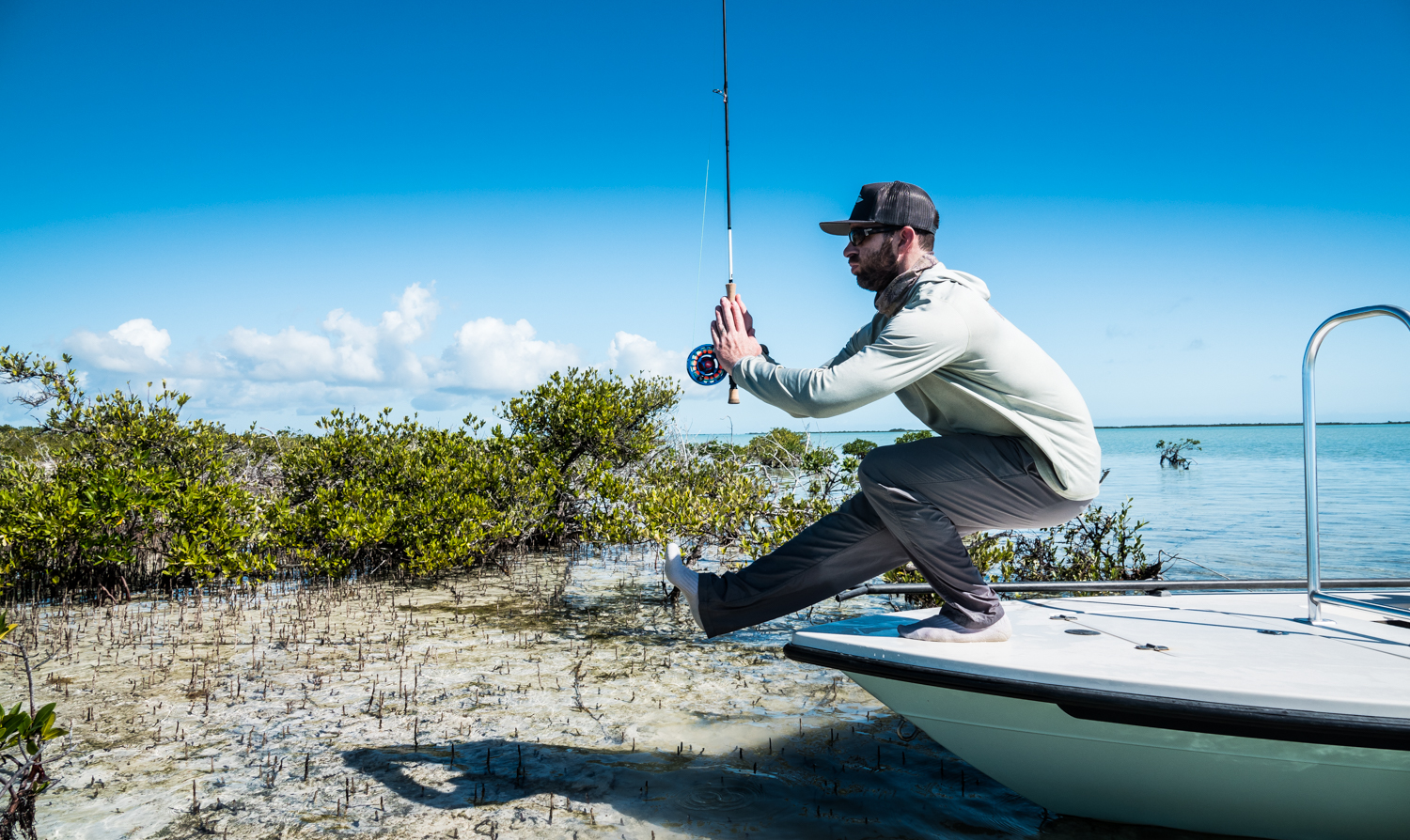
Here are two simple stretches that will help your fly casting.
From time to time I see a fly angler who has trouble with their casting because their shoulders are too tight. A limited range of motion can cause all kinds of problems with your cast. It’s worth taking some time do do some simple stretches.
I have a shoulder stretch I learned in martial arts training, that I do every day in the shower. It only takes a few seconds and it keeps my shoulders flexible. I have another I like to do before I hit the water. This insures that I’m in my best shape for casting.
I’m expecting my audience to have a lot of fun at my expense on this one. It’s silly to stretch in front of the camera anyway and I’m pretty tubby at the minute. It’s ok, go ahead and laugh. These stretches really do make a difference and you don’t have to do them in front of the camera.
WATCH THE VIDEO TO LEARN TWO STRETCHES THAT ARE GREAT FOR FLY FISHERS.
Read More »My Two Favorite Picky Trout Tailwater Nymphs
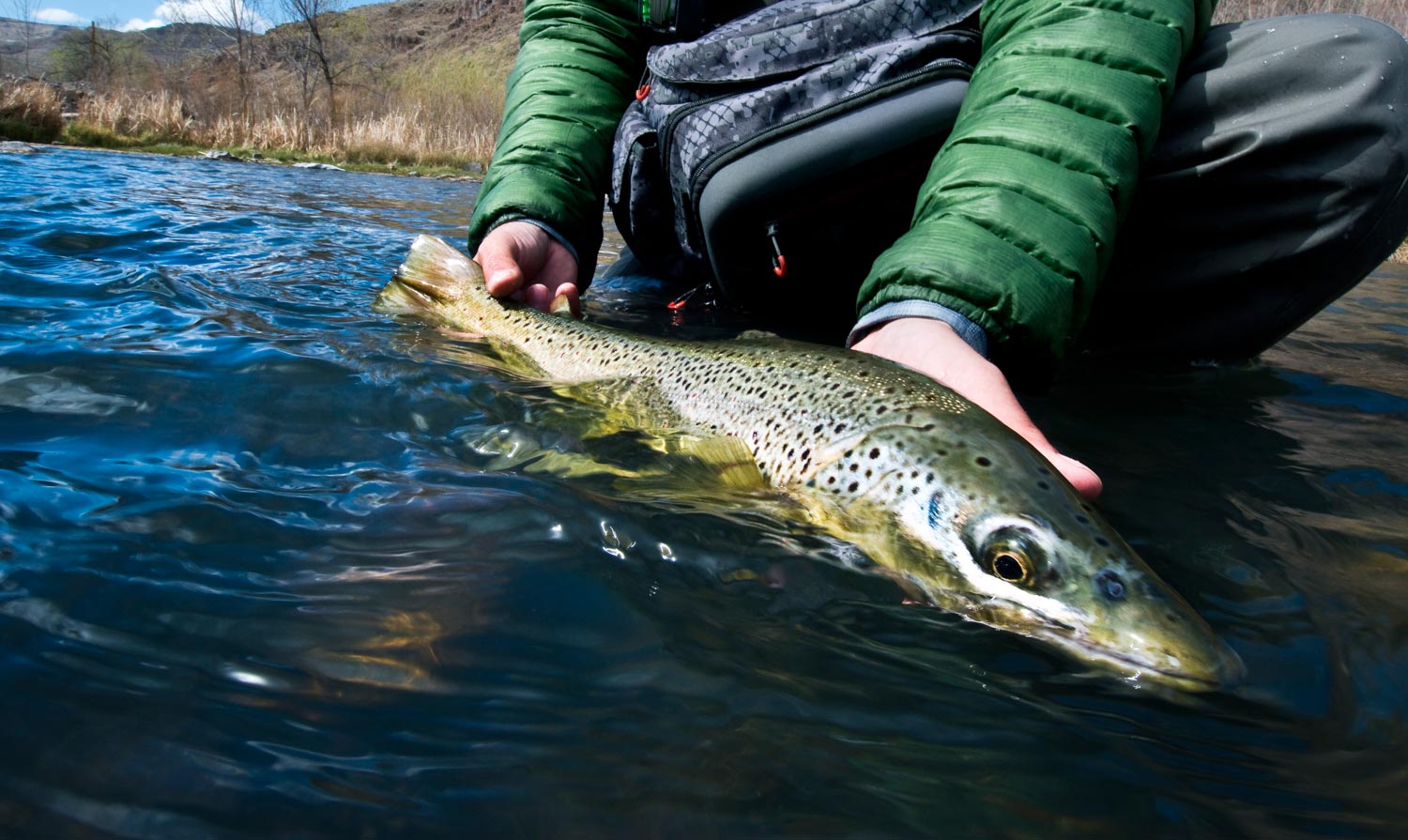
These two patterns never let me down on tough tailgaters.
Most of you are aware that Louis and I just got back from fly fishing and filming our segment for Playground Earth, sponsored by BFGoodrich Tires. We had the pleasure of fly fishing the Owyhee River, one of the finest trophy brown trout tailwaters I’ve ever had the opportunity to wet a line. The resident brown trout here proved to be quite picky, calling for not only accurate drag-free presentations from us, but our casts also had to be timed correctly to the feeding trout we had located. Out of the thousands of flies that we had on hand between us, two nymph patterns accounted for 80% of all trout landed. The splitcase bwo nymph and the splitcase pmd nymph were regular taken for naturals on the water througout our time on the Owyhee River. Never again will I only have a handful of these patterns on hand. I was down to my last splitcase nymph by the end of the trip.
Read More »Bait Dunkin’ to Lure Chuckin’ to Fly Floatin’
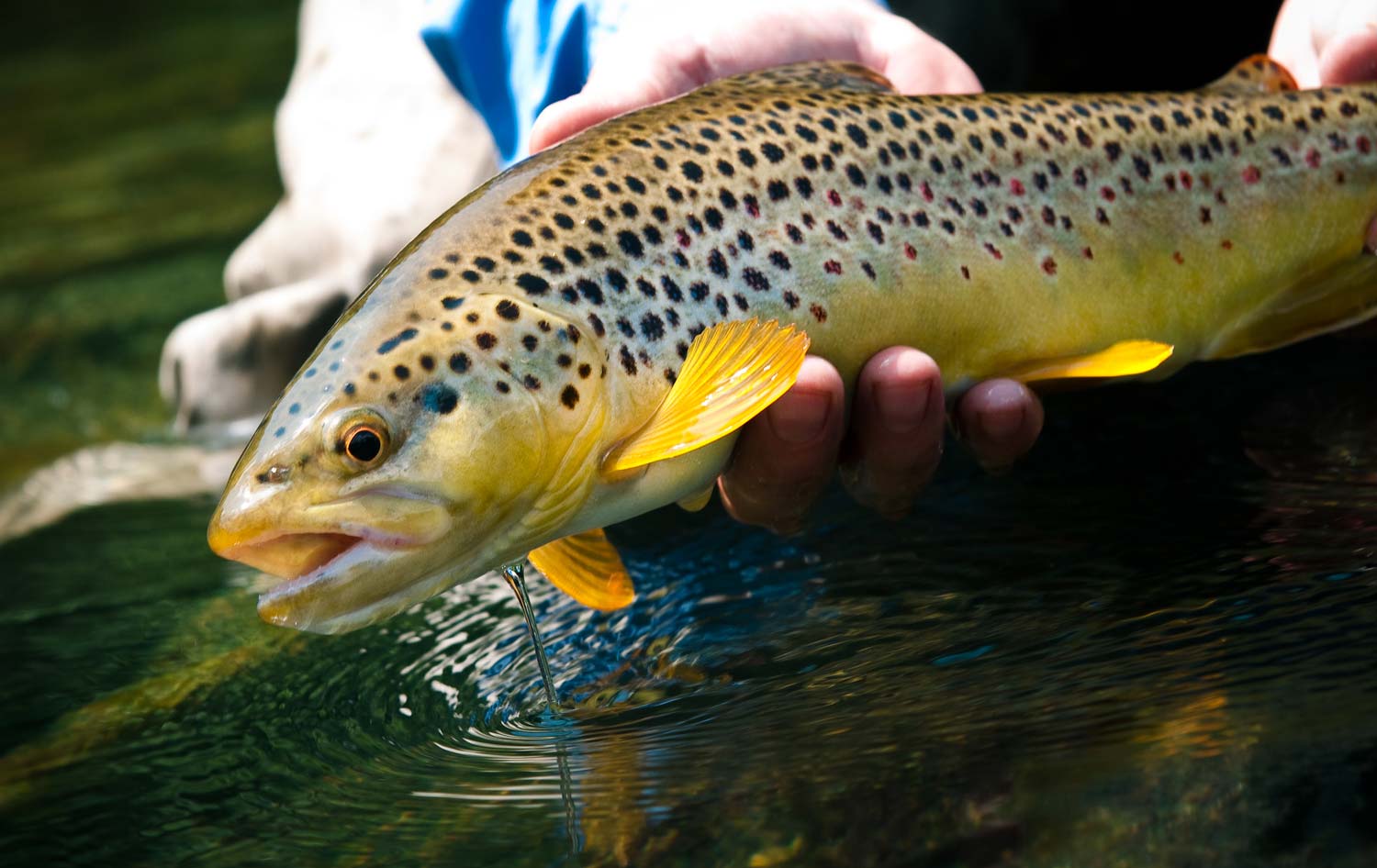
By: Alice Tesar
You could say that a desire to be a trout bum was in his blood, but you’d be ignoring the fact that Tim Widmer has found his own drift. What was in his family, specifically with his dad, was a desire to live a life that allowed for living off the land and being able to enjoy wild places. Tim’s dad never stopped dreaming of a life of living and exploring. Widmer recalls a time when his dad killed, skinned, tanned, and proceeded to sew his own clothes from an elk that the then-municipal employee had hunted, “he was doing bead work on the garments.” This intention is something Tim reflects on in times of life’s transitions. Tim credits his dad for making fly fishing into a career. You may remember Tim from “A Conversation with Fly Tier Tim Widmer” in 2014 but today we’re going to take a closer look at what it takes to be a guide, the value of mentors, and the “natural progression” of an angler.
As a small kid growing up in Estes Park, then “Timmy’s” dad worked for the city and would come home for lunch. After they ate together Timmy would go back to work with his dad and spend the afternoons fishing the ponds behind the office — “Bait dunkin” for browns. As he grew older, he started “lure chucking” along the Big Thompson with friends, they loved the wildness and the ease at which they’d catch fish. On an unlikely day where Timmy and his friend had been skunked, they headed back to their homes, along the way they encountered an old timer with a fly rod. They watched as he proceeded to catch six quality trout out of one hole. In awe they retreated. True to his father’s character instead of buying Timmy casting lessons, his dad bought him lessons to build a fly rod. Every day after track practice, Timmy would swing by Estes Anglers and sit with the owner and learned to build his first fly rod. Years following this, Timmy proceeded to cast this fly rod like a spin rod. He’d throw out the line and drag the dry fly in, like he’d known to do with a lure. Eventually the guides at the fly shop gave him some pointers on a better cast and some tips for fishing the Big T and lakes in Rocky Mountain National Park.
This is the part where “Timmy” becomes “Tim.”
Read More »Use Long Leaders for Flat Water
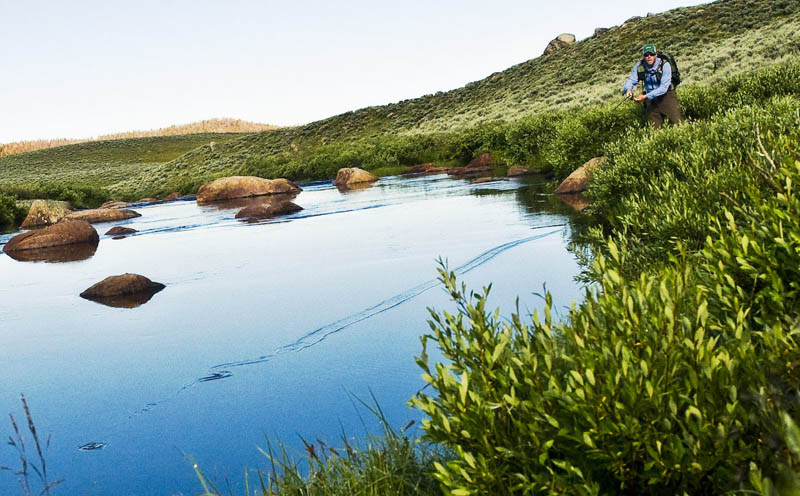
The saying a picture tells a thousand words is true, particularly in this case, as a tool for me explaining how important it is to use a long leader when fly fishing on flat water.
In the picture above, take a moment to view the disturbances the fly line and leader create on the water during a presentation.
Notice how little noise and footprint the leader makes when compared to the fly line. I was casting a Scott G2 5 weight rod with a 9′ leader and foam hopper, and I presented the fly as softly as possible. Anglers often don’t realize how much noise they’re creating during their presentations, and why so regularly they’re spooking the fish their casting to on flat water.
The fly line itself, creates the most noise during your presentation and is by far the biggest contributor to spooking fish. Try using a 10-12′ leader or even a specialty George Harvey dry fly leader, that’s designed to dissipate energy and lay out dry flies with slack. This will increase the distance between your fly and the start of your noisy fly line hitting the water, resulting in more hook ups and less spooks.
This fly fishing tip isn’t expected
Read More »Fly Fishing: The Woolly Bugger Isn’t all that, Or is it?
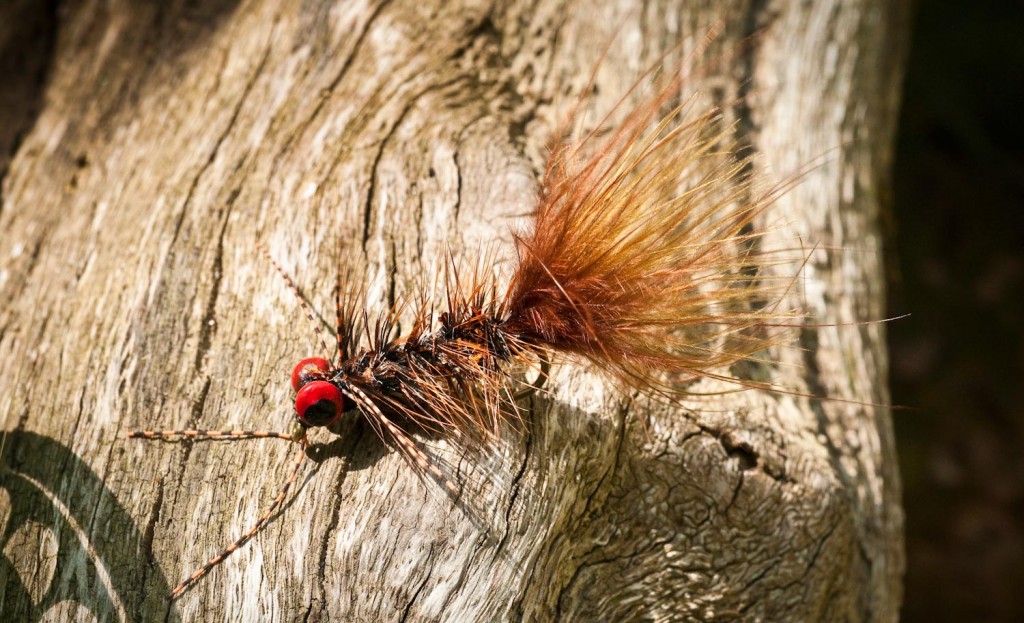
This isn’t Montana, Your Not Norman Maclean, and the Woolly Bugger isn’t all that.
This was a bumper sticker a guide buddy of mine had printed up a few years back. It was prominently displayed for his clients to read when they pulled up to greet him. That’s one hell of an ice breaker for checking fishing egos at the boat ramp, let me tell you. I give my boy J.E.B. Hall props for his comedic humor and gutsy style. For those of you who don’t know J.E.B., he’s a veteran Western North Carolina guide, Author of Southern Appalachian Fly Guide, and has spent multiple seasons guiding at Alaska West. Meet him one time and you’ll say to yourself, “this guy is the funniest guy I’ve ever met in my life”.
Most anglers fall into one of two categories when it comes to their perception of woolly buggers. They either love them or despise them. I love the fly pattern for two reasons. First, for its impressionistic design that’s capable of mimicking many different trout foods, and second, for its versatility in how the pattern can be fished. It’s rare for me to not break out a woolly bugger at some point during the day. When trout aren’t biting, I almost always can find fish willing to snack on them. The only time I keep woolly buggers out of the game and sitting on the bench, is when I’m fishing water where dry flies are the only thing required.
I believe in the woolly bugger so much, If I only had one pattern that I could take with me fishing, that would be it. Why the woolly bugger, you ask? Because it has probably caught more species of fish on this planet than any other fly pattern created since fly fishing was born. Now if I asked Jim Teeny, he would probably argue with me on this one, but what can I say, 90% of the time Jim strictly fishes his signature Teeny Nymph. And why shouldn’t he, the man has caught everything from steelhead to 100lb. tarpon on that fly. But if the tables were turned, and Jim Teeny would have invented the woolly bugger, I’d lay out a strong bet that’s what he’d be fishing instead. I meant no disrespect towards Jim Teeny, the man is a fish catching machine and a pioneer of the sport. He was just the perfect person to make my point on how effective woolly buggers are at catching fish, and I honestly couldn’t help myself.
Read More »2 Common Mistakes That Break Fly Rods While Fighting Fish
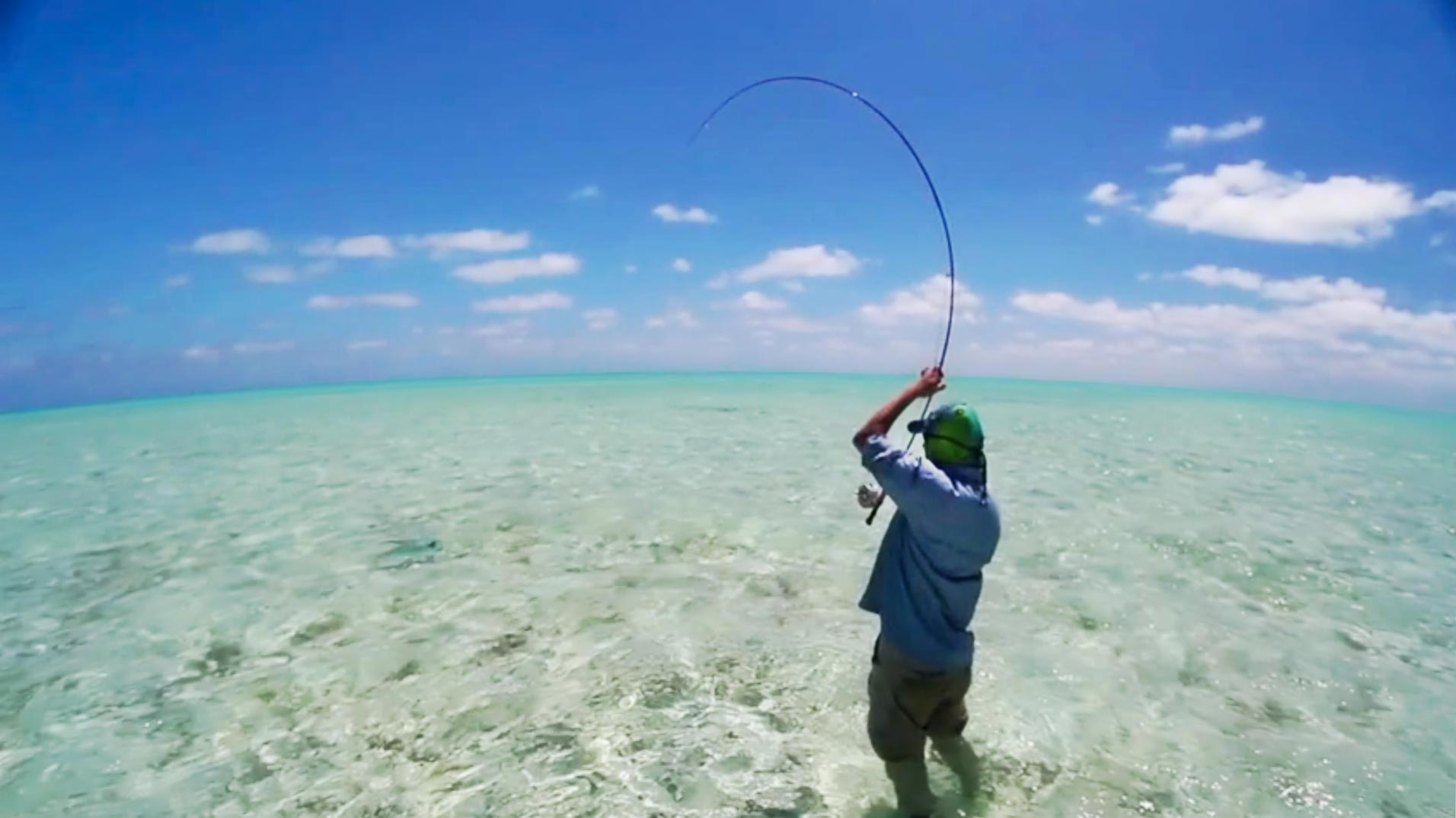
DO YOU EVER TALK BACK TO THE SCREEN?
I watched a video the other day of a guy fighting a permit down in Cuba. The whole time I kept yelling, “You’re gonna break your F-ing rod!” Sure enough, with the permit at his feet, the rod snapped. The fellow grabbed his leader and landed the fish but the damage was done. It didn’t have to end that way.
So Dude, if you’re reading this, I apologize for calling you out but that fish didn’t break your rod, you did. You made two basic mistakes that I see anglers make all the time, so I’m going to use you as an example. Look at it this way, you’re going to save a lot of fly rods and at least yours didn’t die in vain.
Here are the two most common mistakes that cause rods to break while fighting fish and how to avoid them.
Read More »